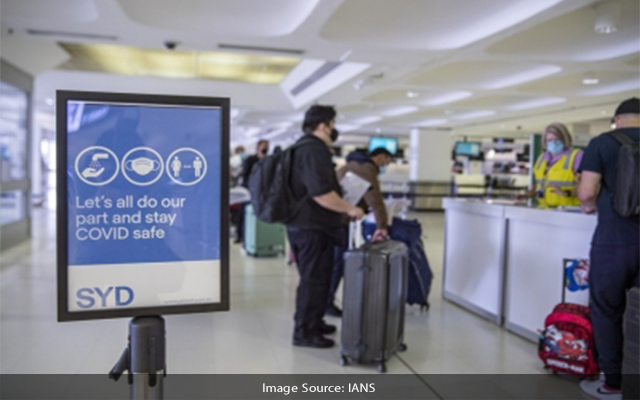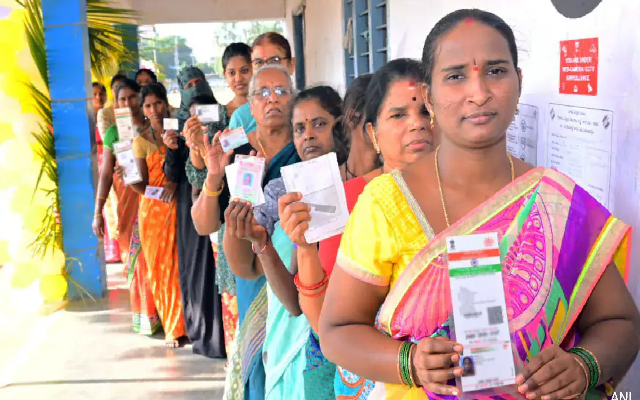Canberra: Epidemiology and tourism experts have welcomed Australia’s move to open the country’s borders after nearly two years since they were first closed during the onset of the Covid-19 pandemic in early 2020.
It has been nearly a month since February 21 when Australia’s borders opened to all travellers who have been fully vaccinated against Covid-19, Xinhua news agency reported on Friday.
It marked an end to the “Fortress Australia” approach to the coronavirus pandemic, which began more than 700 days earlier when Prime Minister Scott Morrison closed the border to all non-citizens and residents from March 20, 2020 and imposed a mandatory 14-day quarantine period for arrivals.
Along with strict lockdowns, the border closure has been credited with Australia’s relative success managing COVID-19, with the country reporting approximately 30,000 cases in the first year of the pandemic.
However, the federal government faced widespread criticism for failing to repatriate Australians who were left stuck overseas due to caps on international arrivals that were introduced to ease pressure on the hotel quarantine system.
Matthew Mason, an expert in infectious diseases and infection prevention expert at the University of the Sunshine Coast, told Xinhua on Friday that he welcomes the idea of easing border restrictions.
“We did have a lot of people who should have been able to come home and all that able to get home,” he said. “I think the limits that we put on were probably in excess of what was needed.”
In September 2020, Morrison promised that by Christmas on December 25 the government would repatriate all 24,000 Australians overseas who had registered with embassies to return home.
By November the figure had increased to 36,875, with 8,070 of whom considered vulnerable, where it remained until March 2021.
Mason was critical of the amount of time it took the government to set up dedicated quarantine facilities for returning Australians.
For a long time, Howard Springs, a former mining camp on the outskirts of Darwin, was Australia’s only dedicated quarantine facility for international arrivals.
Queensland opened a custom-built quarantine facility in January.
Victoria opened its own quarantine hub on February 19, two days before the border re-opened to tourists, following a funding dispute between the federal and state governments.
“They had to be up and running a lot earlier so that we could have some international travel,” Mason, who works with the World Health Organization via the Global Outbreak Alert and Response Network program, said.
In addition to allowing for the free return of Australians to the country, the easing border restrictions also mark the start of the recovery for the nation’s tourism industry.
At the time the borders were closed in 2020 Treasurer Josh Frydenberg acknowledged that the restrictions would have a significant impact on tourism.
The protracted closure has crippled the industry.
According to Tourism Australia, a government agency, tourism in Australia was a driver of economic growth, with domestic and international tourism spend A$122 billion in the 2018-19 financial year.
In the 12 months to June 2019, about 9.3 million international travellers visited the country, who injected A$44.6 billion into Australia’s economy.
According to the Australian Bureau of Statistics (ABS), there were 245,770 visitor arrivals in 2021, down 86.6 per cent on the previous year.
As a result, the value of the tourism industry fell 41 per cent to A$81 billion in the financial year 2020-21.
Before the pandemic the Chinese mainland and New Zealand were Australia’s biggest tourism markets, with 1.3 million people from each origin visiting Australia in 2019.
However, while travellers from New Zealand spent a combined A$2.6 billion in Australia in 2019, those from China spent A$12.4 billion , significantly more than those from any other country.
Even with borders opened, experts have forecast that it could take 18 months before international visitor numbers return to pre-pandemic levels.
The federal government on Tuesday further eased Australia’s border restrictions by announcing that the country’s ban on the arrival of large international cruise ships will be lifted after more than two years.
Before the ban the cruise ship industry employed 18,000 Australians, with more than 600,000 international visitors arriving on cruises in financial year 2018-19.
The move was welcomed by the industry, which previously criticized the government for failing to lift the ban at the same time it opened the border to planes in February.
When the ban is lifted, it will mark an end to Australia’s travel restrictions for all fully vaccinated travellers.
“It’s about A$5.2 billion and about 18,000 direct jobs,” John Hart, executive chair of the Australian Chamber for Tourism, told the Australian Associated Press (AAP) about the value of the cruise industry.
“But it’s not just that that’s important. It’s important that on embarkation we get all sorts of accommodation bookings, as we do bookings for restaurants, attractions, at all the ports of call,” he said. “It’s a massive contribution to our tourism ecosystem.”



















